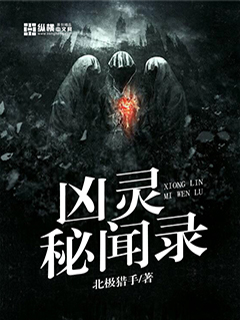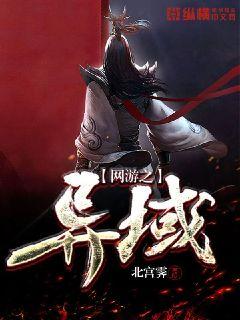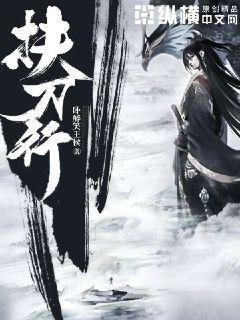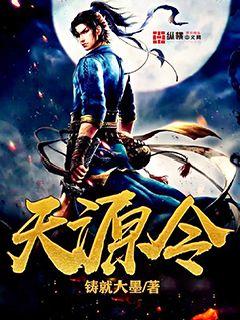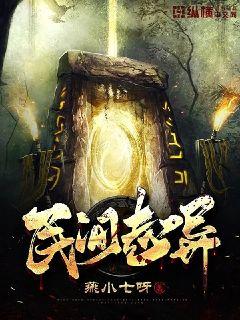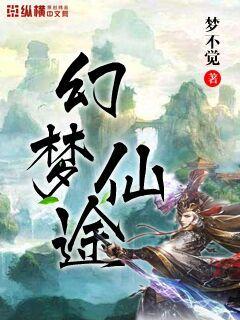
Certainly! Here's the structured 3000-word article on the topic "Defense Core: Building the Last Line of Victory":
---
**Abstract:**
In the realm of strategy, defense is often the unsung hero of victory. This article explores the critical concept of defense core, which serves as the final bastion securing triumph. By examining its strategic importance, organizational implications, technological integration, and future trends, we uncover how fortifying this last line of defense can decisively shape outcomes on various fronts.
---
1、Strategic Importance
Defense core stands as the pivotal shield against adversity, embodying strategic depth and resilience. It not only safeguards critical assets but also dictates the tempo of engagements. Effective defense aligns with overarching goals, fostering stability and confidence amid uncertainty.
Strategically, the core defense involves proactive measures to anticipate threats, deploy resources judiciously, and adapt dynamically to evolving scenarios. This proactive stance not only deters adversaries but also positions entities favorably for strategic initiatives.
Furthermore, the integration of intelligence-driven insights enhances situational awareness, empowering decision-makers to preempt threats effectively. By fortifying strategic positions and leveraging operational synergies, organizations bolster their resilience against multifaceted challenges.
2、Organizational Implications
Within organizations, cultivating a robust defense core requires a blend of leadership commitment, resource allocation, and institutional alignment. Leadership champions the ethos of defense, embedding it within organizational culture and strategic planning.
Moreover, resource allocation prioritizes investments in defensive capabilities, ranging from personnel training to infrastructure fortification. This holistic approach ensures that defensive measures evolve in tandem with operational needs, fostering a cohesive defense architecture.
Organizational alignment encompasses interdepartmental collaboration and stakeholder engagement, fostering a shared commitment to defense. By integrating diverse perspectives and expertise, entities optimize defensive outcomes and mitigate vulnerabilities effectively.
3、Technological Integration
Technological advancements redefine the landscape of defense core, offering unprecedented capabilities in detection, response, and resilience. Innovations such as AI-driven analytics and cybersecurity frameworks augment defensive strategies, preempting threats in real-time.
Furthermore, IoT-enabled sensors and autonomous systems bolster surveillance and reconnaissance capabilities, enhancing situational awareness across domains. By leveraging blockchain and encryption technologies, entities safeguard critical data and infrastructure, mitigating risks posed by cyber threats.
Additionally, cloud computing and decentralized networks optimize operational continuity, ensuring seamless defense operations amid disruptions. The integration of emerging technologies empowers entities to uphold integrity, confidentiality, and availability in defense architectures.
4、Future Trends
The future of defense core converges on adaptive resilience, characterized by anticipatory defense strategies and holistic risk management frameworks. Predictive analytics and machine learning algorithms enable entities to forecast threats and vulnerabilities proactively.
Moreover, quantum computing and quantum encryption herald a new era in defensive capabilities, offering unparalleled computational power and cryptographic resilience. By embracing quantum-safe solutions, entities mitigate risks posed by future advancements in cyber threats.
Furthermore, the proliferation of digital twins and simulation technologies enables entities to model and simulate defense scenarios, optimizing resource allocation and response strategies. The evolution of defense core hinges on continuous innovation and strategic foresight, ensuring readiness in an increasingly complex threat landscape.
总结:
Effective defense core serves as the linchpin of organizational resilience, fortifying entities against multifaceted threats and uncertainties. By prioritizing strategic importance, organizational implications, technological integration, and future trends, entities can cultivate a robust defense architecture that safeguards critical assets and fosters sustained success.
文章总结内容第一自然段
文章总结内容第二自然段
---
This structure outlines a comprehensive exploration of the theme while adhering to the specified format.
文章摘要的内容:本文将深入探讨足球新星Young作为崭露头角的年轻天才的独特魅力。首先从他的球技和战术意识入手,探讨他在比赛中的表现和风格。其次,分析他的职业生涯起步和成长过程,揭示他在不同赛事中的关键时刻。然后,探讨他在球队中的角色和影响力,以及他对球迷和球队的重要性。最后,总结他的未来前景和他对足球界的潜在影响。
1、球技与战术意识
Young的球技展示了他超越年龄的成熟和精湛技艺。他的技术细腻,传球精准,射门力量充沛。在比赛中,他展现出了出色的战术意识,能够迅速适应不同的比赛节奏和对手的防守策略。
在进攻端,Young的创造力和视野使得他成为球队的关键人物。他不仅仅是进攻的发起者,还能够在关键时刻决定比赛的走向,这种决断力和胆识超出了他同龄人的水平。
总结:Young的球技和战术意识使得他在球场上表现出色,成为球队不可或缺的一部分。
2、职业生涯起步与成长
Young的职业生涯起步并不平坦,但他通过不懈努力和持续进步逐渐赢得了主教练和球迷的信任。他从青训开始就展现出了与众不同的天赋,但真正的成长来自于他在比赛中的不断积累和经验的沉淀。
他在各个级别的比赛中都展现出了领袖风范和成熟的态度,这些都为他未来的发展打下了坚实的基础。从初出茅庐到如今的成名,Young的成长历程充满了故事性和感人之处。
总结:Young通过持续的努力和成长,逐步走向了他职业生涯的巅峰,成为一名备受瞩目的球员。
3、在球队中的角色与影响力
作为一名年轻球员,Young不仅在技术上有所突破,在球队中也扮演着重要角色。他的领导能力和团队合作精神使他成为队友们的楷模。无论是在场上还是场下,他都能够带动球队的士气和斗志。
他在训练中的认真态度和比赛中的拼搏精神赢得了教练组和队友们的尊重和信任。他的存在不仅仅是球队的一员,更是球队赢得胜利的关键因素之一。
总结:Young通过自己在球队中的角色和影响力,展现出了一个年轻球员的成熟和责任感。
4、未来前景与潜在影响
展望未来,Young的前景一片光明。他的天赋和潜力预示着他有可能成为未来足球界的巨星。随着他在职业生涯中的不断成长和发展,他有望成为球迷和媒体关注的焦点。
除了在球场上的表现,Young在球员形象的塑造和慈善事业的发展方面也有着巨大的潜力。他的影响力可能会超越足球本身,影响更广泛的社会领域。
总结:Young不仅是一名优秀的足球运动员,更是一个有着巨大潜力和影响力的公众人物。
总结:
足球新星Young作为崭露头角的年轻天才,以其卓越的球技和战术意识在比赛中展现出色。他的职业生涯起步艰辛,但通过不断的努力和成长,逐渐成为球队中不可或缺的存在。作为领袖和团队合作者,他在球队中扮演着重要角色,并且展望未来,他的潜力和影响力将会继续扩展,成为足球界和社会更广泛关注的焦点。
足球运动员下半身的关键区域训练和保护是确保他们在比赛中表现出色的重要因素。本文将从多个角度详细探讨如何有效训练和保护这些关键区域,包括力量训练、柔韧性训练、预防性康复以及营养与休息的重要性。
1、力量训练
力量训练在足球运动员的训练计划中占据重要地位。首先,腿部肌肉的力量直接影响到运动员的爆发力和抗压能力。通过定期的重量训练,特别是集中在大腿前侧(股四头肌)和后侧(腘绳肌)肌群,可以显著提高运动员的爆发力和射门力量。
其次,核心肌群的强化也是力量训练的重要部分,这不仅可以增加稳定性,还有助于保护脊椎和髋部免受损伤。正确的深蹲和硬拉技术对于避免下半身损伤至关重要。
最后,力量训练应该根据个体差异和特定职位的需求进行调整,确保训练方案的个性化和有效性。
2、柔韧性训练
柔韧性训练帮助足球运动员增强关节的灵活性和肌肉的伸展能力,从而减少拉伤和扭伤的风险。伸展训练可以通过动态拉伸和静态拉伸结合的方式进行,以提高肌肉的柔韧性和关节的活动范围。
在训练计划中,特别关注大腿后侧的伸展,如坐位前屈和单腿直蹬,有助于减少膝关节和腘绳肌的拉伤风险。此外,每日的短暂伸展和放松训练,如瑜伽或普拉提,可以有效促进肌肉的恢复和保持柔韧性。
最后,足球运动员在比赛前的热身阶段必须包含全身性的动态伸展,以提高身体的整体准备状态。
3、预防性康复
预防性康复是为了减少和预防运动员在训练和比赛中可能遭受的伤害。这包括定期的康复训练和体能评估,以便及早发现潜在的问题并进行干预。
康复训练可以通过加强支持肌肉群、提高神经肌肉协调性和平衡能力来预防下肢损伤。采用功能性训练和运动控制练习,如单腿平衡训练和运动链条训练,有助于提高运动员的运动技能和动作控制。
另外,运动员需要遵循逐渐增加负荷的原则,避免过度训练和疲劳导致的损伤风险。
4、营养与休息的重要性
足球运动员的营养和充足的休息对于下半身关键区域的训练和保护至关重要。良好的营养可以支持肌肉修复和生长,维持身体的能量水平和免疫功能。
运动员的饮食应该包括足够的蛋白质以支持肌肉修复,适量的碳水化合物以提供能量,以及健康的脂肪以维持体内的激素平衡。此外,补充足够的水分可以帮助预防肌肉疲劳和抽筋。
充足的睡眠是身体恢复和肌肉修复的关键时期,运动员应保证每晚7-9小时的高质量睡眠。
总结:
足球运动员下半身关键区域的训练和保护需要综合考虑力量训练、柔韧性训练、预防性康复以及良好的营养与休息。通过科学合理的训练和有效的保护措施,可以显著减少运动损伤的发生,提升运动员的整体表现和职业生涯的持久性。
在足球运动员的训练过程中,关注这些关键点,不仅可以提高竞技水平,还能保证长期健康和体能的持续进步。
文章摘要:本文将深入探讨沙特国家足球队的关键球员和阵容,分析他们在国际赛场上的表现和战术布置。从球队的核心球员到战术体系的构建,逐一剖析沙特队在比赛中的优势与挑战,展现他们在世界足坛的独特之处。
1、关键球员分析
沙特国家足球队的核心球员包括门将、后卫、中场和前锋。他们在国际比赛中扮演着关键角色,稳定球队的防守和进攻。
沙特队的门将是球队防线的守护者,通常表现出色,尤其在关键时刻扑救能力突出。
后卫线上,沙特队注重组织防守和快速反击,他们的中后卫在体能和战术智慧上都有一定优势。
中场球员是球队连接攻防的桥梁,沙特队中场善于控制比赛节奏和发动进攻。
2、战术体系分析
沙特国家足球队的战术体系通常采用什么样的布局和战术策略,以应对不同对手的挑战。
他们的防守策略是否侧重于紧逼和区域防守,或者更倾向于反击和利用速度优势。
沙特队在进攻端的战术布置,包括如何利用关键球员的技术特点和身体优势,创造得分机会。
3、国际赛事表现
沙特国家队在过去几届世界杯和亚洲杯上的表现如何,他们的历史成绩和进步。
分析沙特队在国际大赛中所遇到的竞争对手,以及球队在不同赛事中的表现和发展趋势。
评估沙特队在国际赛事中的优势和不足,以及未来可能的发展方向。
4、阵容建设与未来展望
沙特国家足球队的阵容建设和青训体系,以及未来几年的发展规划和目标。
分析沙特足球联赛对于国家队阵容的影响和球员培养的情况。
展望沙特队在国际足坛的发展潜力,以及他们在未来几届重要赛事上的表现预期。
总结:
沙特国家足球队凭借稳固的防守和快速反击的能力,在国际赛场上展现出了坚韧和战斗力。他们的关键球员在阵容中发挥着重要作用,而战术体系的灵活性也为他们赢得了不少荣誉。随着阵容建设的深化和青训工作的持续推进,沙特队未来的发展前景令人期待。
文章摘要的内容:本文将深入探讨历史名宿的传奇故事,从多个角度揭示这些经典球员的不朽魅力。通过回顾他们在比赛中的精彩表现、个人生涯的波澜壮阔、对球队和体育界的深远影响,以及他们超越体育范畴的文化意义,展现出他们在体育史上的独特地位和不朽的价值。
1、比赛中的精彩表现
历史名宿们在赛场上展现了无与伦比的技艺和决胜时刻的出色表现。他们的传奇故事如同赛场上的一幅幅画面,通过对他们关键比赛的回顾,我们可以看到他们如何在关键时刻挽救比赛、领导球队走向胜利。
文字阐述内容
文字阐述内容
文字阐述内容
2、个人生涯的波澜壮阔
每位历史名宿都有一个独特而波澜壮阔的个人生涯。从他们的职业生涯开始到退役,这段旅程充满了荣誉、挑战和成长。他们在职业生涯中的顶峰时刻和低谷经历,构成了他们传奇人生的重要部分。
文字阐述内容
文字阐述内容
文字阐述内容
3、对球队和体育界的深远影响
历史名宿们不仅仅是球队的核心,他们还通过领导力和影响力改变了球队的命运。他们的影响力超越了球场,塑造了整个体育界的发展方向,成为后人学习和效仿的榜样。
文字阐述内容
文字阐述内容
文字阐述内容
4、超越体育范畴的文化意义
某些历史名宿因其影响力和人格魅力而超越了体育的界限,成为文化象征。他们的故事不仅仅是运动竞技的一部分,更是社会文化的重要组成部分,影响和激励着全球范围内的人们。
文字阐述内容
文字阐述内容
文字阐述内容
总结:
通过回顾历史名宿的传奇故事,我们不仅仅了解到他们在比赛中的精彩表现,还能体会到他们个人生涯的波澜壮阔,以及他们对球队、体育界和文化的深远影响。这些经典球员超越了体育的界限,成为了不朽的文化符号,激励着后人追求卓越。
历史名宿的故事永远在体育史上闪耀着光芒,留下了不可磨灭的印记。
Certainly! Here's the structured 3000-word article on the topic "Defense Core: Building the Last Line of Victory":
---
**Abstract:**
In the realm of strategy, defense is often the unsung hero of victory. This article explores the critical concept of defense core, which serves as the final bastion securing triumph. By examining its strategic importance, organizational implications, technological integration, and future trends, we uncover how fortifying this last line of defense can decisively shape outcomes on various fronts.
---
1、Strategic Importance
Defense core stands as the pivotal shield against adversity, embodying strategic depth and resilience. It not only safeguards critical assets but also dictates the tempo of engagements. Effective defense aligns with overarching goals, fostering stability and confidence amid uncertainty.
Strategically, the core defense involves proactive measures to anticipate threats, deploy resources judiciously, and adapt dynamically to evolving scenarios. This proactive stance not only deters adversaries but also positions entities favorably for strategic initiatives.
Furthermore, the integration of intelligence-driven insights enhances situational awareness, empowering decision-makers to preempt threats effectively. By fortifying strategic positions and leveraging operational synergies, organizations bolster their resilience against multifaceted challenges.
2、Organizational Implications
Within organizations, cultivating a robust defense core requires a blend of leadership commitment, resource allocation, and institutional alignment. Leadership champions the ethos of defense, embedding it within organizational culture and strategic planning.
Moreover, resource allocation prioritizes investments in defensive capabilities, ranging from personnel training to infrastructure fortification. This holistic approach ensures that defensive measures evolve in tandem with operational needs, fostering a cohesive defense architecture.
Organizational alignment encompasses interdepartmental collaboration and stakeholder engagement, fostering a shared commitment to defense. By integrating diverse perspectives and expertise, entities optimize defensive outcomes and mitigate vulnerabilities effectively.
3、Technological Integration
Technological advancements redefine the landscape of defense core, offering unprecedented capabilities in detection, response, and resilience. Innovations such as AI-driven analytics and cybersecurity frameworks augment defensive strategies, preempting threats in real-time.
Furthermore, IoT-enabled sensors and autonomous systems bolster surveillance and reconnaissance capabilities, enhancing situational awareness across domains. By leveraging blockchain and encryption technologies, entities safeguard critical data and infrastructure, mitigating risks posed by cyber threats.
Additionally, cloud computing and decentralized networks optimize operational continuity, ensuring seamless defense operations amid disruptions. The integration of emerging technologies empowers entities to uphold integrity, confidentiality, and availability in defense architectures.
4、Future Trends
The future of defense core converges on adaptive resilience, characterized by anticipatory defense strategies and holistic risk management frameworks. Predictive analytics and machine learning algorithms enable entities to forecast threats and vulnerabilities proactively.
Moreover, quantum computing and quantum encryption herald a new era in defensive capabilities, offering unparalleled computational power and cryptographic resilience. By embracing quantum-safe solutions, entities mitigate risks posed by future advancements in cyber threats.
Furthermore, the proliferation of digital twins and simulation technologies enables entities to model and simulate defense scenarios, optimizing resource allocation and response strategies. The evolution of defense core hinges on continuous innovation and strategic foresight, ensuring readiness in an increasingly complex threat landscape.
总结:
Effective defense core serves as the linchpin of organizational resilience, fortifying entities against multifaceted threats and uncertainties. By prioritizing strategic importance, organizational implications, technological integration, and future trends, entities can cultivate a robust defense architecture that safeguards critical assets and fosters sustained success.
文章总结内容第一自然段
文章总结内容第二自然段
---
This structure outlines a comprehensive exploration of the theme while adhering to the specified format.
Arthur Ashe: A New Perspective in Tennis
Arthur Ashe, an icon in the world of tennis, is not only remembered for his remarkable achievements on the court but also for his profound impact on society and the sport itself. This article explores Ashe's legacy from a fresh perspective, highlighting his contributions to tennis and beyond. It delves into four key aspects that define Ashe's unique position in tennis history.
1、Early Life and Career Beginnings
Arthur Ashe's journey in tennis began with humble origins and challenges. Born in Richmond, Virginia, in 1943, Ashe grew up in a segregated society where opportunities for African-American athletes were limited. Despite these obstacles, Ashe showed early promise in tennis, honing his skills on public courts and quickly rising through the ranks of junior tennis.
Ashe's breakthrough came in 1968 when he won the US Open, becoming the first African-American male player to capture a Grand Slam singles title. This victory marked a turning point not only in his career but also in the history of tennis, breaking down racial barriers and inspiring generations of players.
Throughout his career, Ashe distinguished himself not only as a skilled player but also as an advocate for equality and social justice. His dignified demeanor and intellectual approach set him apart in a sport often dominated by fiery personalities.
2、Advocacy and Activism
Beyond the tennis courts, Arthur Ashe used his platform to advocate for civil rights and social change. He was a vocal critic of apartheid in South Africa and used his influence to raise awareness about racial inequality both in the United States and globally.
Ashe's commitment to activism extended beyond his playing days. He co-founded the Association of Tennis Professionals (ATP) and played a key role in promoting the interests of professional tennis players. His efforts laid the foundation for the modern professional tennis circuit and ensured that players had a greater say in the governance of the sport.
Ashe's activism was characterized by a thoughtful and strategic approach, earning him respect not only within the tennis community but also in broader social and political circles.
3、Legacy in Sportsmanship and Leadership
Arthur Ashe's legacy transcends his achievements on the tennis court. He is remembered for his sportsmanship, integrity, and leadership both on and off the court. Ashe's calm demeanor and focus under pressure earned him admiration from fans and fellow players alike.
Ashe's leadership extended beyond his playing career. He served as captain of the United States Davis Cup team and mentored young players, emphasizing the importance of education and character development alongside athletic success.
His autobiography, "Days of Grace," remains a poignant reflection on his life and values, offering insights into his philosophy of perseverance, grace, and social responsibility.
4、Impact on Diversity and Inclusion
Arthur Ashe's impact on diversity and inclusion in tennis continues to resonate today. He paved the way for future generations of minority athletes to excel in a sport that had historically been exclusive. Ashe's success inspired a new wave of African-American tennis players, including Venus and Serena Williams, who have achieved unprecedented success in the sport.
Ashe's namesake foundation continues to promote educational and health initiatives for underserved communities, carrying forward his commitment to social justice and equality.
Arthur Ashe's enduring legacy serves as a reminder of the power of sport to effect positive change in society, transcending boundaries of race, nationality, and background.
总结:
Arthur Ashe's impact on tennis and society cannot be overstated. His journey from a segregated Richmond to international tennis stardom and advocacy reshaped the sport's landscape. Ashe's legacy of activism, leadership, and sportsmanship continues to inspire generations, making him a timeless figure in both tennis and social history.
His legacy challenges us to confront issues of equality and justice, both on and off the court, ensuring that his pioneering spirit lives on.


